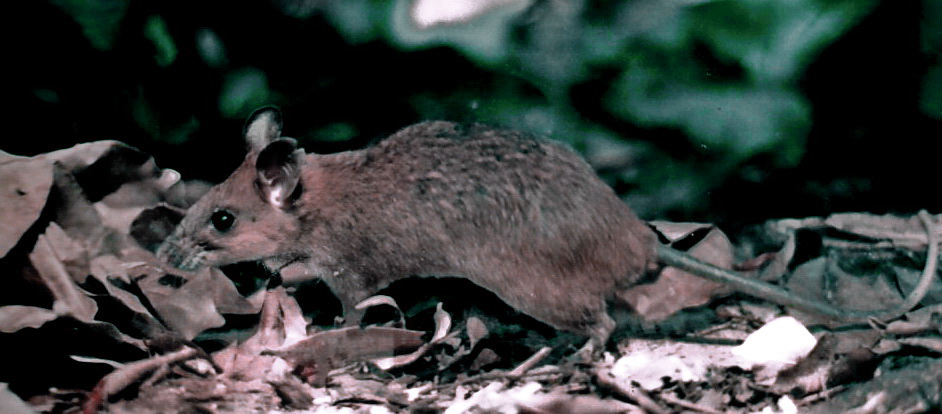The Small Mammal Communities of Phu Khieou Wildlife Sanctuary and Doi Suthep-Pui National Park

BSc student, Somyod Ua-Apisitwong provided an overview of the common small mammals that live in evergreen and deciduous in northern Thailand—species that would indicate recovery of small mammal communities, when implementing forest restoration. Another BSc student, Jenpop Thaiying studied what actually happens to small mammals in the initial stages of forest restoration in some of FORRU's early restoration plots.
ABSTRACT: A survey of small mammals was carried out to compare the species composition of small mammal communities in evergreen and deciduous forest types. Four trap grids were established in Doi Suthep National Park: behind Chiang Mai Zoo (430 m.), near Wat Palad (570m), Suan Son (970m), and Doi Suthep Summit (1610m) and two grids in Phu Khieo Wildlife Sanctuary: Salapom (590m) and Thung Ka Mung (840m). The grids behind Chiang Mai Zoo and at Palad were in deciduous dipterocarp savanna, whilst the others were in various kinds of evergreen forest. Each grid covered an area of 90m x 90m and contained 49 traps at 15m intervals. Bait was banana, mixed with sticky rice and crushed roasted peanuts. Animals were marked by the hair-clipping method and released at the site of capture. In evergreen forest Rattus surifer, R. rattus, R. bukit, R. sabanus, R. bowersi, Menetes berdmorei, and Tupaia glis were trapped and Tamiops mcclenllandii, Callosciurus finlaysonii bocourti and C. flavimanus thai were directly observed. In deciduous dipterocarp savanna Menetes berdmorei and Melogale personata were captured. Using total number of individuals of all species, caught per trap-night, as an index of relative abundance, indicated that evergreen forest sites supported a higher abundance of small mammals than did deciduous forest sites, except for Doi Suthep Summit, where the abundance was lowest. Using estimates of population density (by mark-recapture method), as a measure of absolute abundance of R. rattus, R. bukit, R. surifer, at 2 evergreen forest sites, indicated that R. bukit was the commonest species at Thung Ka Mung, whilst R. rattus was the commonest at Suan Son. Distance between successive recaptures increased with the body size of rat species, indicating that larger rat species forage more widely than smaller ones do. The home ranges of all 3 species overlapped considerably, indicating an absence of space-partitioning, as a means of avoiding interspecific competition.

